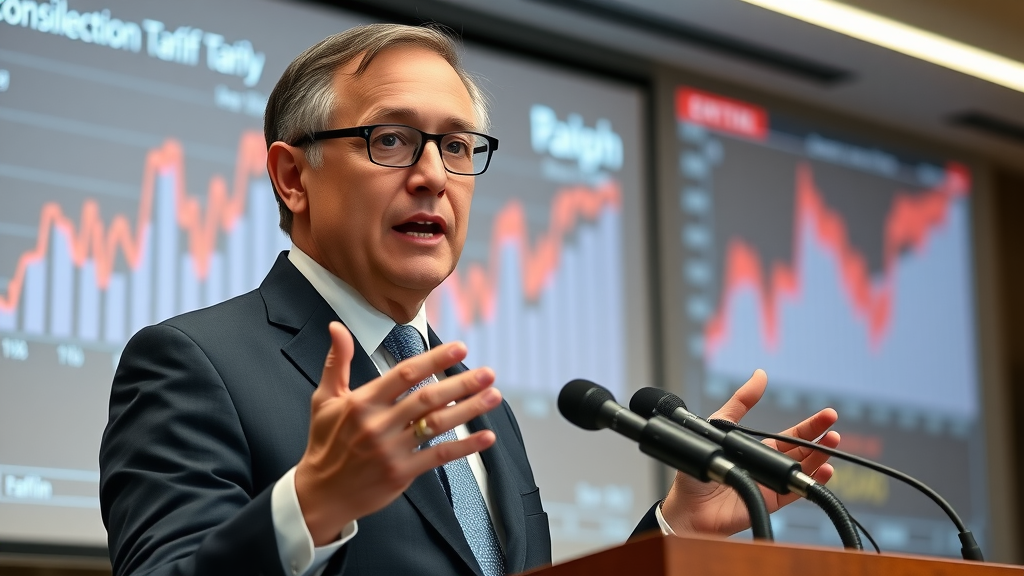Did you know that over 100 countries worldwide have imposed restrictions or duties on mineral exports, sending shockwaves through global supply chains? As countries race to secure their own resources and foster domestic industries, mineral export duties have emerged as one of the most contentious issues in international trade. Whether you’re a trader, policy maker, or industry stakeholder, understanding export restriction policies and their impact on raw materials can make or break your next deal. In this article, we’ll uncover the hidden effects of export duties , unravel real-world examples of export taxes on critical minerals , and arm you with actionable strategies to avoid common export pitfalls. This is your essential guide to navigating mineral export duties with confidence.
The Startling Truth About Mineral Export Duties: An Eye-Opening Look
The world of mineral export duties is far from simple. While their stated aim may be to protect domestic industries and boost local economies, their impact on supply chains can be profound and far-reaching. For example, when a major mineral-rich country applies a high duty rate on mining exports—say, cobalt or nickel—the ripple effect is felt all the way from raw material suppliers to finished goods manufacturers across continents. These duties can dramatically shift trade flows, spike prices, and disrupt multi-billion-dollar industries reliant on industrial raw materials for everything from electric vehicles to high-tech electronics.
You’re about to discover how export restriction policies unfold in the real world. We’ll dive deep into specific export tax examples, analyze who really benefits—or loses—from these trade measures, and provide strategies to stay compliant and competitive. Along the journey, we’ll uncover common pitfalls, best practices for handling export duties , and policy lessons drawn from the OECD Inventory of Export Restrictions . If you’re navigating the evolving landscape of mineral trade, this is the critical knowledge you need to stay ahead.
- You will discover how mineral export duties influence global supply chains.
- The complexities of export restriction policies unpacked.
- Real-world examples of export taxes on critical minerals.
- Actionable strategies to avoid common export pitfalls.

Understanding Mineral Export Duties and Their Impact on Raw Materials
Defining Mineral Export Duties and Export Taxes: Why They Matter
Mineral export duties —often referred to as export taxes —are government-imposed levies on minerals leaving a country’s borders. Their rationale is typically built around raising revenue, promoting domestic processing of raw materials , or serving as a tool in strategic trade policy. These export taxes can range from flat percentage rates to complex, tiered models based on market value or export volume. For the metals and minerals sector, these duties shape the international trade landscape by dictating how competitive a country’s mineral resource exports remain abroad.
At a global scale, the diversity of export duty rates is startling. Some nations employ minimal or even zero duties to encourage outbound trade, while others enforce duties that can reach up to 25-30% on certain critical minerals . The difference in duty rates can dramatically alter the economic logic for processing, exporting, or importing mineral products , and has implications for industries across the supply chain. Understanding these movements is essential for everyone from mining operators and traders to governments and downstream manufacturers.
How Export Duties Affect Raw Materials and Industrial Raw Material Supply Chains
The imposition of export duties can have both predictable and unexpected consequences on raw materials and supply chains . By making exports more costly, governments hope to incentivize local value addition—encouraging domestic industries to refine, process, or otherwise upgrade industrial raw materials before they leave the country. This strategy can help build local industries, preserve jobs, and develop technical know-how.
However, the reality is often much more complicated. For global manufacturers dependent on predictable supplies of raw inputs—like copper, nickel, lithium, or rare earth elements—rising export taxes can squeeze margins, cause delays, and upend inventory planning. This instability ripples through vast supply chains —from mine to port to assembly line—leading some companies to restructure contracts, seek alternative suppliers, or even relocate production to countries with more favorable duty rates. In short, mineral export duties don’t just affect exporters but can reshape entire global industries dependent on critical minerals.
Case Study: The Critical Mineral Export Restrictions Dilemma
Consider the case of Indonesia’s nickel export duty—a prime example of a policy intended to foster domestic value addition. By banning unrefined nickel exports and imposing high duties on semi-processed ore, Indonesia aimed to attract investment in local smelters and downstream industries. While successful in sparking domestic processing plants, the move upended the global supply chain for batteries, especially for electric vehicles, raising costs for manufacturers worldwide. The sudden shortage of exportable nickel ore disrupted suppliers, caused price spikes, and sent companies scrambling for new sources.
Such export restricting measures can incentivize foreign direct investment and technology transfer, but they can just as easily drive buyers to alternative markets or spark retaliatory trade measures. As this case shows, mineral export duties are a double-edged sword, often producing ripple effects far beyond national borders—and are closely monitored in the OECD inventory of export restrictions as a significant factor in global industrial policy.

Raw Material Export Restrictions: Driving Forces and Policy Intentions
Export Restrictions on Industrial Raw Materials: Domestic Value Addition or Trade Barrier?
Export restrictions on industrial raw materials are designed as a lever for countries to gain more economic benefit from their natural resource endowment. Policy makers argue that by either restricting or taxing exports, they can force raw materials to be processed domestically, thereby spurring investment, improving technology, and supporting job creation in downstream sectors. For example, export restricting measures are frequently imposed on mineral products like bauxite, copper, or rare earths, with the explicit goal of moving up the value chain.
However, the effectiveness and fairness of such measures remain hotly debated. Critics contend that these restrictions often serve as a trade barrier , distorting international markets, and prompting trade partners to enact countermeasures or search for new suppliers. This leads not only to inefficiencies and increased production costs, but also threatens long-term trade relationships and the stability of industrial raw material supply chains. The balance between fostering domestic industry and upholding fair trade remains elusive, highlighting the complexity of mineral export duties and their global repercussions.
Global Inventory of Export Restrictions and the Role of Export Duty on Metals and Minerals
The OECD inventory of export restrictions provides a comprehensive overview of the various policies countries use to control raw material exports. According to this inventory, export restricting measures on metals and minerals have increased steadily over the past decade, especially among resource-rich economies. These can include outright bans, quota systems, or a complex web of export duty rates and licensing requirements.
The role of export duty on metals and minerals is crucial in shaping international trade dynamics. Countries imposing high export duty rates on critical minerals like lithium, cobalt, nickel, or copper can effectively steer the flow of global mineral resource trade. Understanding these trends in the global inventory of export restrictions is essential for stakeholders aiming to anticipate risks, seize new opportunities, and maintain supply chain resilience.
| Country | Nickel | Cobalt | Lithium | Copper | Bauxite |
|---|---|---|---|---|---|
| Indonesia | 20% | 10% | 0% | 5% | 15% |
| Australia | 0% | 0% | 0% | 0% | 0% |
| DRC | 0% | 10% | 0% | 0% | 0% |
| China | 3% | 3% | 5% | 2% | 10% |
| Brazil | 0% | 0% | 2% | 2% | 5% |
Metals and Minerals: Who Benefits or Loses from Export Taxes?
"Raw material export restrictions often backfire, hurting domestic industries more than they help." — Industry Analyst
Export Taxes: Promoting Domestic Processing or Creating Unintended Consequences?
Governments implementing export taxes often hope to catalyze domestic mineral processing and downstream manufacturing. While policies such as export restricting measures on unprocessed ores can accelerate investment in smelters and refineries, they also risk triggering counterproductive outcomes. For instance, local processing may remain uncompetitive due to high input costs or a lack of technical expertise, while global companies may simply opt for alternative suppliers with more predictable duty rates .
Moreover, the unpredictability spawned by export restriction policies can dampen foreign direct investment, slow technology transfer, and even stifle job growth—the very objectives these policies are meant to achieve. Balancing the promise of domestic value addition with the realities of international trade is a constant tightrope act for policy makers shaping metals and minerals strategies.

Examples of Export Duty Impact on Supply Chains: Nickel, Cobalt, and More
Let’s look at three high-profile cases where mineral export duties dramatically altered supply chains for critical minerals:
- Nickel (Indonesia): The 2014 and 2020 bans on unprocessed nickel ore exports led global battery manufacturers to scramble for alternate sources, sharply driving up nickel prices.
- Cobalt (DRC): The Democratic Republic of Congo introduced an export duty rate of 10% on cobalt concentrates, temporarily squeezing global battery supply chains and leading traders to invest in local refining capacity.
- Bauxite (Malaysia): After a ban and subsequent policy reversals, bauxite exporters saw whiplash in production and sales, feeding uncertainty into international aluminum supply chains.
Each situation shows how quickly export restriction policies can pivot supply and demand, often with unpredictable downstream effects for manufacturers and consumers.
- Indonesia
- Democratic Republic of Congo (DRC)
- China
- Russia
- Argentina
OECD Inventory of Export Restrictions: Lessons for Policy Makers and Traders
The OECD inventory of export restrictions documents a growing array of policies targeting industrial raw materials and mineral resource exports across the globe. It reveals not just an uptick in export restricting measures , but also a shift in the type of minerals affected—extending now to lower-value bulk materials and higher-value critical minerals . Traders and policy makers must track these developments closely, as sudden changes can catch supply chains unprepared.
A key takeaway: success in navigating mineral export duties lies in understanding the global inventory of export restrictions and building risk mitigation strategies that can flex and adapt to shifting regulatory landscapes.
Critical Minerals at the Forefront: Export Duties and Global Supply Chains
How Export Restriction Policies Shape the Critical Minerals Market
Critical minerals —such as lithium, cobalt, rare earths, and niobium—are at the core of new technology supply chains. Export restriction policies that affect these mineral resources can have an outsized impact on industries ranging from renewable energy to military systems and electronics. Governments imposing high export duties attempt to keep more value and jobs at home but risk global shortages, price volatility, and diplomatic friction.
When a major producer tightens export policies, the shockwaves affect every downstream industry, from electric vehicle makers to wind turbine producers. Understanding how these restriction measures interact with supply and demand is essential for every actor in the critical minerals market.

Navigating Export Duties: Best Practices for Compliance and Risk Mitigation
Companies operating in international mineral trade must develop a robust compliance and risk mitigation toolkit. This starts with systematic monitoring of export duty rates , participating in industry associations that help interpret policy updates, and implementing contract clauses that account for cost fluctuations driven by export taxes . Building strong relationships with local partners and government agencies can provide early warning of pending rule changes.
It is also critical to diversify suppliers. Relying too heavily on one country or region increases the risk of exposure to abrupt export restricting measures . Mapping out alternative sources and developing flexible logistics arrangements are key strategies for maintaining supply chain continuity amid changing metals and minerals regulations.
Case Analysis: Major Metal Mineral Exporters and Their Export Duty Policies
Different countries adopt contrasting approaches to mineral export duties. Australia, the world’s largest exporter of iron ore and lithium, famously employs a largely open export model with minimal export taxes , maximizing its trade relationships and drawing in foreign direct investment. By contrast, Indonesia and China employ more frequent and significant export duty rates on nickel, rare earths, and bauxite—often adjusting rates in response to market and geopolitical factors.
These case analyses show that understanding local context and government policy signals is as important as tracking global duty rates themselves. Policy volatility is often just as impactful as the tax rates imposed, and proactive stakeholder engagement is a must in high-risk markets.
People Also Ask: Unpacking Common Questions About Mineral Export Duties
What are duties on exports?
Duties on exports are governmental taxes imposed on goods leaving a country, often designed to control trade, generate revenue, or protect domestic industries by making exported goods more expensive in international markets.
What are the duties of mineral processing?
Mineral processing duties involve the proper extraction, purification, and refining of minerals. Exporters must ensure that export raw materials meet strict international quality standards and comply with relevant mineral export duties and regulations, balancing efficiency with compliance.

What is an example of export duty?
An example: Indonesia imposes a significant export duty on nickel ore to encourage domestic refinement and value addition, impacting both global supply chains and the downstream battery and electric vehicle industries.
Who is the biggest exporter of minerals?
Currently, Australia holds the position as the world's leading exporter of minerals, particularly major metals and minerals such as iron ore and critical mineral resources, benefiting from liberal export policies and a stable regulatory environment.
Expert Opinions: The Future of Export Duties and Global Trade
"The interplay between mineral export duties and global supply chains is more profound than ever as countries seek to balance economic growth and resource security." — Trade Policy Specialist
Key Debate: Are Export Restrictions on Industrial Raw Materials Justifiable?
The justification for export restrictions on industrial raw materials comes down to a country’s economic priorities and resource endowment. Proponents argue these policies are essential to building local industry and moving value addition in-country. Opponents warn of unintended harm: shrinking export revenues, retaliation by trade partners, and long-term reputational damage. With the stakes so high, this debate remains central to shaping the future of international mineral trade.
Many policy experts advocate for greater multilateral dialogue and transparency—using organizations like the WTO and OECD to standardize reporting and reduce friction around industrial raw materials export restricting measures.
How Changes in Export Duty Policy Could Reshape Critical Minerals Access
Even slight tweaks in export duty policy can quickly change the calculus for global buyers of critical minerals . Higher duties may raise capital requirements for foreign investment, while sudden bans or quotas can cause lasting supply chain dislocation. As industry demand for minerals like lithium, cobalt, and nickel accelerates, nimble policy adaptation and international coordination will be essential for keeping supply chains functioning without stifling economic development.

Essential Tips for Exporters: Avoiding Common Mineral Export Pitfalls
- Monitor export duty rates and restrictions in real time.
- Diversify supplier and buyer relationships to manage risk.
- Negotiate flexible supply contracts accounting for policy volatility.
- Join industry trade groups for alerts on regulatory updates.
- Build strong networks with customs and compliance professionals globally.
Best Practices for Dealing with Export Restrictions on Metals and Minerals
Stay proactive by continuously monitoring the OECD inventory of export restrictions and keeping abreast of new policies on metals and minerals . Develop contingency plans in case of sudden export restricting measures, and work collaboratively with logistics partners to adjust shipments and routes as needed. Maintain clear and transparent communication with both suppliers and buyers to quickly resolve disruptions.
Invest in digital tools to track changes in duty rates and automate compliance documentation where possible. Attend international trade conferences to gain firsthand updates on evolving regulatory frameworks and participate in advocacy efforts for trade-friendly export duty policy.
How to Stay Compliant with Export Duty Laws and Policy Updates
To avoid costly penalties or export delays, stay updated on export duty laws by subscribing to industry bulletins, government notifications, and customs regulatory updates. Assign dedicated compliance officers or consultants to interpret new export taxes and ensure all shipments are documented to regulatory standards. Collaborate with local legal experts in each export market to swiftly address and adapt to shifting compliance environments.
FAQs About Mineral Export Duties and Supply Chain Impacts
- How do mineral export duties affect global supply chains and product pricing?
- What risks do exporters and manufacturers face with new export regimes?
- Are there proven strategies for avoiding penalties on misreported shipments?
- How can policy makers balance resource protection with global trade competitiveness?
- What trends should industry watch for as export duty rates change worldwide?
Key Insights for Policy Makers, Traders, and Industry Stakeholders
- Understanding export restriction mechanisms is fundamental for modern trade strategy.
- Regulatory updates on industrial raw material exports are rapid and impactful—be prepared.
- Success depends on proactive risk management and continuous supply chain monitoring.
Share Your Perspective and Influence the Conversation on Mineral Export Duties
"Have insights to share on global trade? Let's talk—call us at 203-271-7991 to explore contributing an article."
Staying Ahead: Adapting to the Evolving Landscape of Mineral Export Duties
The Future of Raw Material Export Restrictions: What to Watch
Expect further tightening of export restrictions on critical minerals as governments respond to shifting geopolitical priorities and technological demands. Staying alert to global export duty trends will be critical to remaining competitive and compliant in the years ahead. Watch for increasing digitalization of customs enforcement and more multilateral negotiations shaping new norms for industrial raw materials exports.
Why Industry Voices Are Critical in Shaping Export Duty Policy
No policy journey is complete without ground-level feedback. Industry stakeholders should engage regularly with policy makers, trade associations, and multilateral bodies to share practical impacts and propose revisions to export duty regimes. These consultations can bridge the gap between policy intent and real-world outcomes, fostering a trade environment that supports economic growth, resource security, and global competitiveness.
Take action, build resilience, and shape the global conversation on mineral export duties—your voice shapes tomorrow’s supply chains!
Understanding mineral export duties is crucial for navigating the complexities of international trade. For instance, the article “South African miners say proposed chrome export tax threatens jobs” discusses how South Africa’s proposed tax on chrome ore exports could significantly impact profitability and lead to job losses in the mining sector. ( reuters.com ) Similarly, “Gemfields asks Zambia to reverse emerald export tax” highlights the challenges faced by gemstone producers due to Zambia’s reintroduction of a 15% export tax on emeralds, which the company argues negatively affects the sector’s sustainability and attractiveness for investment. ( reuters.com ) These resources provide valuable insights into the real-world implications of export duties on the mineral industry.
 Add Row
Add Row  Add
Add 




Write A Comment